
I will in this little example model a value proposition to internal stakeholders, this offering will later be part of solution for customers, but I will not describe that part.
Modelling will be done with the use of business model canvas, box diagram inspired by Intersection Groups tool Edgy and with the modelling language ArchiMate.
Why model our value proposition?
George Box in 1987 said that “All models are wrong, but some are useful!”.
Box argued that although no model can perfectly represent reality, models are essential because they help us to understand, describe, and predict real-world phenomena. He emphasized that the simplifications models provide allow us to focus on the most crucial aspects of the problem we are trying to solve or the system we are trying to understand. The usefulness of a model, according to Box, is not in its ability to be perfectly correct, but in its ability to provide insight into complex systems and to inform decisions effectively.
Who will I offer a Value proposition?
You need to identify the stakeholders you want and need to package a value offering to, so who are my stakeholder?
We find our stakeholders to be customers, partners, suppliers, internal business units and regulators.
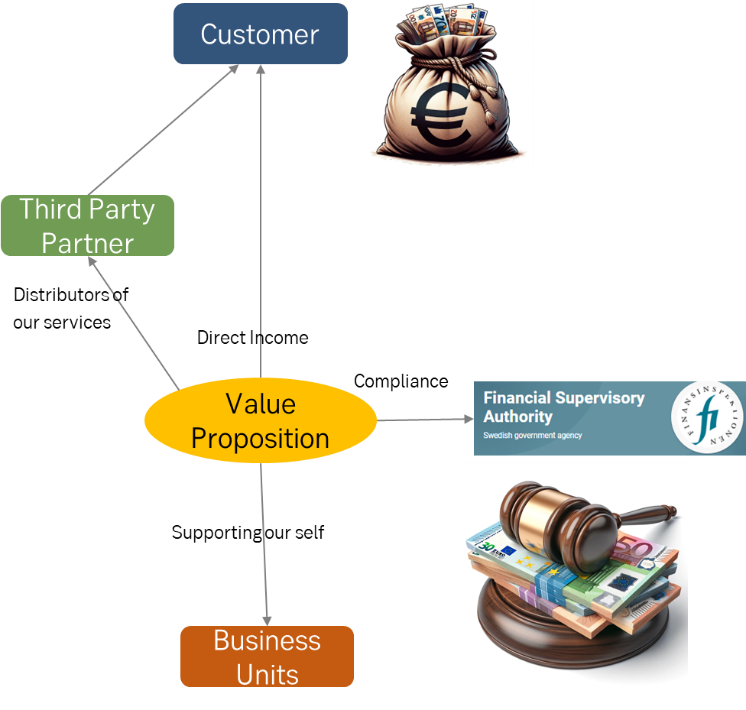
You might argue that to regulators we do not provide value, however regulations are driving value in most cases for our customer, for example GDPR is good for our customers, but also good for us, because it helps us have the house in order so to say. Partners can be of the type third party partner, or a corporate group partner, and witch corporate group partner I mean legal entities that my company owns.
We might have multiple stakeholders and the value proposition will differ, for example to provide a value proposition to our customer, requires that we also provide a value proposition to regulators showing that we are compliant with regulations related to the customer value proposition.
Packaged Value Proposition
Now when we know who our stakeholders are and what value propositions we will offer the different stakeholders, we also need to decide how our stakeholders shall consume our value propositions. The picture to the right is a simplified view of this, we have our stakeholders, we decided what value proposition we shall package to them. Our stakeholders consume the packaged value proposition via a channel that can be a shop, a branch office, an API, a mobile app or some other interface.
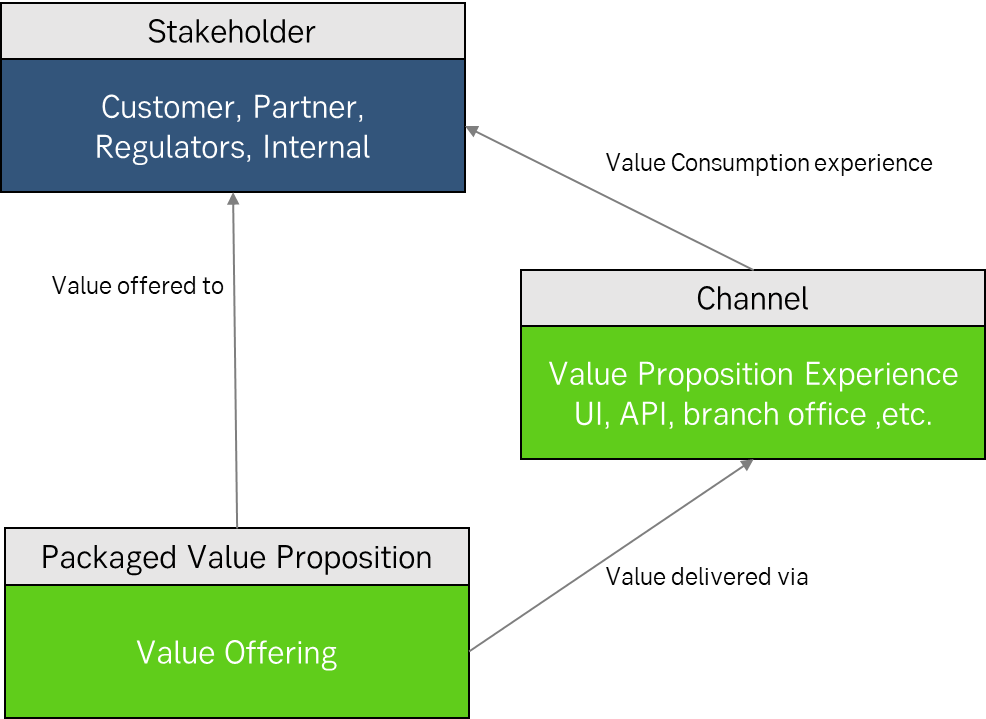
Explore what our value proposition means!
Let’s make an analysis with the help of Business Model Canvas, a tool that helps you understand the key aspects of the value proposition, what do you need, how shall you interact with the stakeholders, what cost elements do you have etc.
To learn about this tool in details visit Business Model Canvas – Download the Official Template (strategyzer.com).
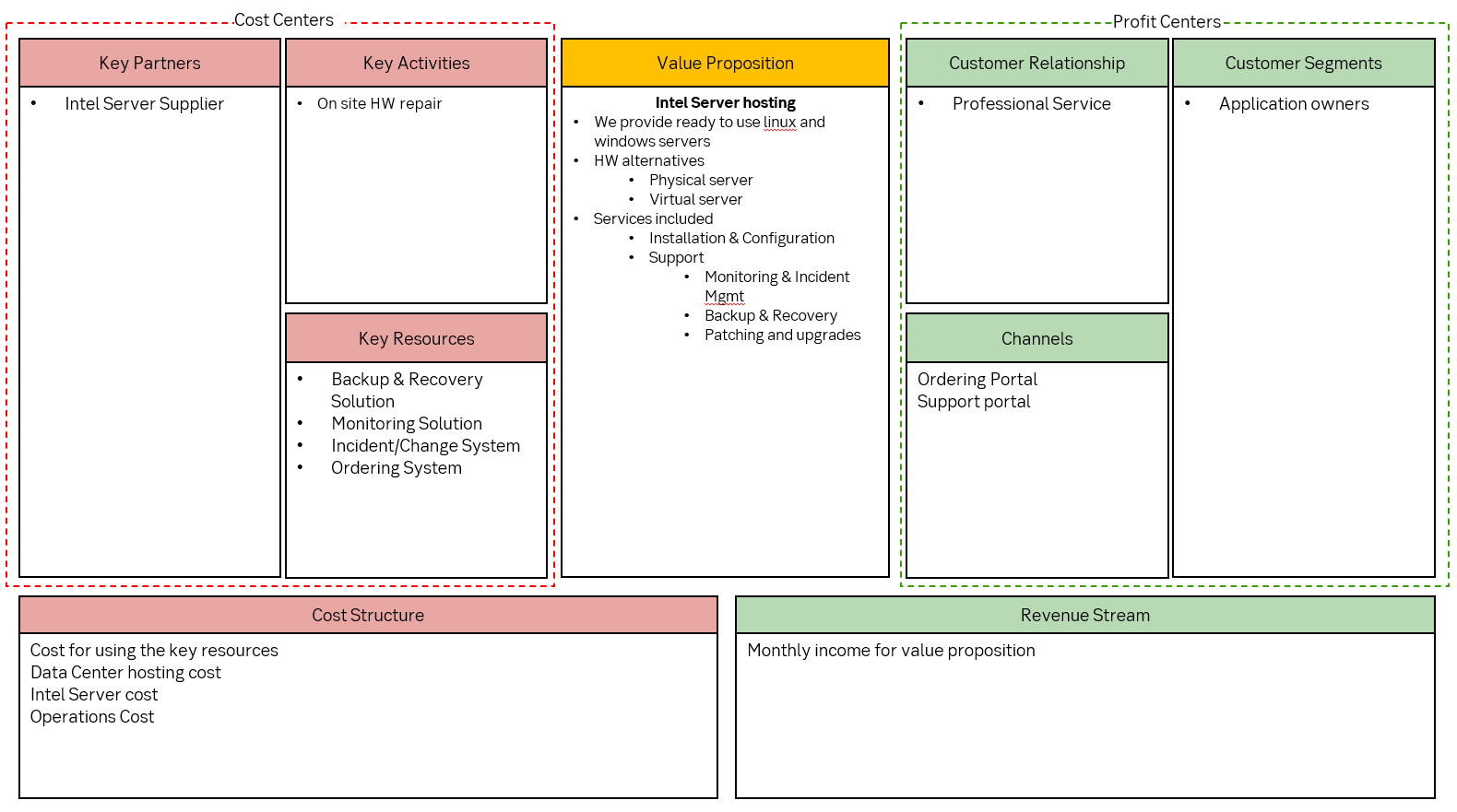
We will populate the canvas with the most important parts to get an overview from both a cost and an income perspective and at the same time understand what we need and what we need to do to provide the value proposition.
We start with formulating our Value Proposition so its important parts are clear and specified. As we already have discussed stakeholder, we fill in the box called Customer Segment, that is not only customers but any stakeholder group you are addressing. We also discussed how we shall offer the value to the stakeholder so let’s refine that and put that into the box Channels.
Key Partner is a in this example a good supplier of HW and the ability to repair the HW on site, we are also dependent on some Key Resources on that we have the capability to do backup & restore, monitoring etc that hopefully already is provided by someone in our organisation.
We can now finalise the canvas by discussing how we like to maintain a good relationship with our stakeholders and investigate the cost aspects and how we shall get income or cost coverage.
If we still, consider the value proposition is solid and that the stakeholder get what they need, we can proceed with the solution design.
Solution Modelling
This is not a full scaled education in modelling, but you will hopefully get interested in diving deeper into to this very important competence area.
We first start with a very simple block diagram style to not have to explain to much modelling language specifics, but in the end of this article I will show an ArchiMate modelling language version of the solution where you can see the different element icons, and the specific relationship used.
In this model we named the Packaged Value Proposition as a Product, and the stakeholder defines what kind of product it is, if the stakeholder is a customer, it brings in money to our organisation, if the stakeholder is a regulator, it prevents cost, if it is internal stakeholder, we support our self and indirectly other stakeholders for example our customer.

Each box has a title in the top, specifying what it represents, except the blue process elements looking like a boxed arrow, as we consider it to be self-explained.
Our stakeholder “Application owners” is offered the Packaged Value Proposition “Intel Server Hosting” as a Product, when delivered we get an Asset our “Intel Server”, and we are provided by a few services via two channels “Order Portal” for ordering new intel servers and “Support Portal” for any additional help, like performance metrics, incident, recovery, restore and other services.
Behind the services we have the Processes that defines all the tasks and the order of them to produce the services.
In the picture at the far-right side, we also have our Key Partner “Intel Server Provider” that is supplying us with intel servers, but also repair of failed HW components, for example CPU, Memory, Disk etc. and is part of our process chain.
You might wonder what the difference is between a product and services, to explain it with an example from your normal day to day life, would be that you bought the Spotify subscription it has a monthly cost, and it comes with a number of entitlements that allows you to stream music, create playlists, share your favourite songs with others that also have a Spotify subscription. In other words, the product you buy is delivered with its bundled gods and is entitling you to consumer the services coming with the product under the terms and conditions specified in the agreement used when you purchased the product.
Modelling with ArchiMate
When modelling we need to do it in a way that is useful for the group that you work with, and this will then force you to change the way you express things, and most often simplify as much as possible and only include the things that matters.
The box in red is the legend showing the type of elements used in the model, so it is easier to understand the model.
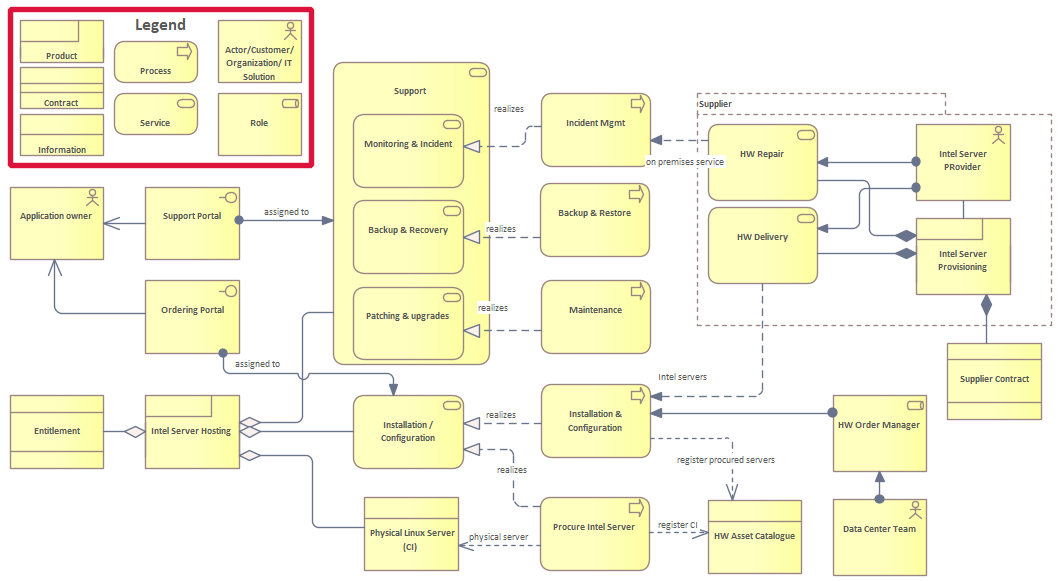
As you can see ArchiMate is stricter language than the simple block diagram I used earlier and contains specific relationships between elements and is also defining which elements can be related to each other and in which way, as with any language it is directing you based on its grammar. ArchiMate also contains multiple Layers, the model we see here is done in the Business Layer and is representing the solution without any information about how it is automated with IT solutions, this is describing in the application layer and in the technical layer.
The benefit of a strict language is that you need to think through the solution in more detail how the solution actually works.
As this language contains more relationships it also requires more knowledge of the language but can be learned very fast by most people as it is rather logical.
Beautifying you model
To make a model more appealing you must add a little design to the model, so bring up the artist in you and add some nice design to your model, but do not ruin it, keep the logic in place but make it simpler for your target audience.
We can for example add icons to some of the elements to make it nicer.
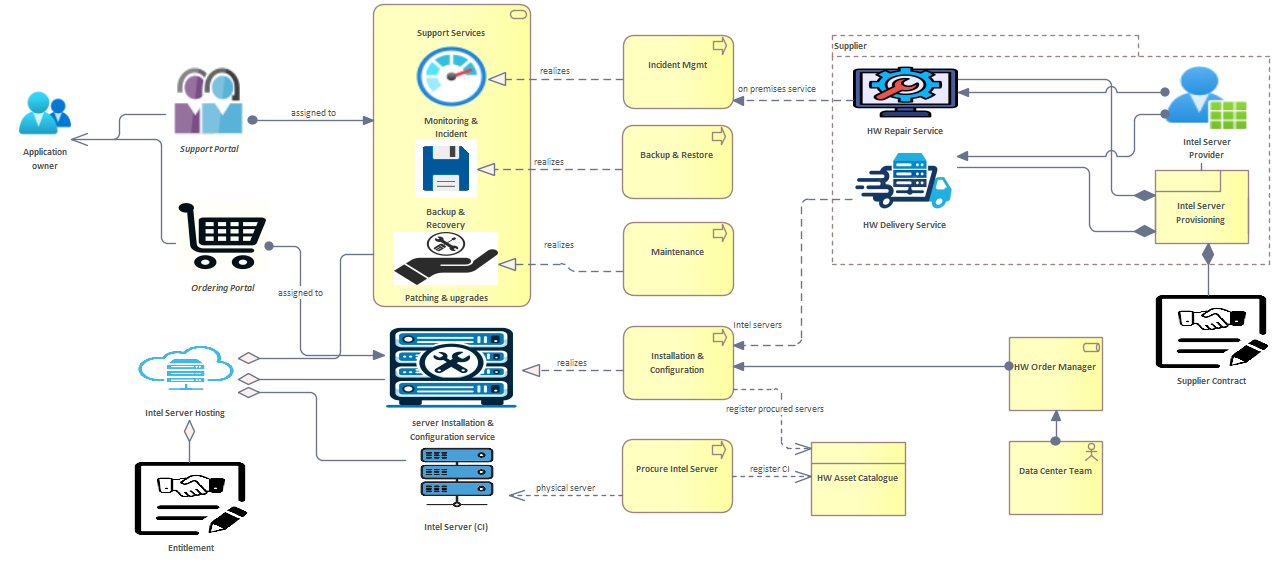
Knowledge
There is a lot of good books and sites that contains knowledge in modelling.
To just mention some that is good:
ArchiMate® 3.2 Specification (opengroup.org)
TOGAF® The New Release | www.opengroup.org
And a few books that I like:
Business Architecture Guild BizBok
The Book – Strategy To Reality | Whynde Kuehn (strategyintoreality.com)